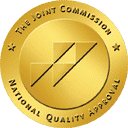High Performance Ownership – How to be a Trustworthy Leader
 This series of articles is published with permission from Douglas Langager. Doug graduated from the Navy’s cardiopulmonary program in Bethesda, Maryland, in 1975. From 1983-1988, the cardiac catheterization program at Brooke Army Medical Center, Fort Sam Houston, Texas, was under his care. After retiring from the Army, he worked as both a supervisor and staff educator at Providence Hospital in Portland, Oregon and University Hospital in Augusta, Georgia. Mr. Langager then worked at Berkeley Medical Center in Martinsburg, West Virginia and recently retired from patient care. He continues an active relationship with the cardiovascular community through education and thought leadership.
This series of articles is published with permission from Douglas Langager. Doug graduated from the Navy’s cardiopulmonary program in Bethesda, Maryland, in 1975. From 1983-1988, the cardiac catheterization program at Brooke Army Medical Center, Fort Sam Houston, Texas, was under his care. After retiring from the Army, he worked as both a supervisor and staff educator at Providence Hospital in Portland, Oregon and University Hospital in Augusta, Georgia. Mr. Langager then worked at Berkeley Medical Center in Martinsburg, West Virginia and recently retired from patient care. He continues an active relationship with the cardiovascular community through education and thought leadership.
This article is the second in a series of three articles by Doug that will discuss Creating a Culture of High Performance Ownership Nurses and Tech’s in the Cardiac Cath Lab.
After my retirement from the Army in 1988, I moved to the Pacific Northwest, where I hired on to be the cath lab supervisor at Providence Hospital in Portland, Oregon. They had a very interesting culture/process going. The critical care unit responded to all STEMIs. The patient’s cardiac care unit (CCU) nurse became the patient’s first experience and last experience during their hospital stay. CCU nurses received the patient in the emergency department, came with them to the cath lab, and were a key member to facilitate care in both departments. Upon completion of the cardiac cath, we assisted the patient to the CCU where post care was given. If open heart surgery was planned, believe it or not, our CCU nurse followed the patient through this pathway. Talk about high performance and patient satisfaction!
Leaders are often frustrated because they believe they spend 80 percent of their time on 5 percent of staff who are not meeting expectations.6 Leadership effort should be put on the high and middle performers. Cut the low performers loose.
The backbone to Providence Hospital leadership training was Zenger-Miller’s “The Basic Principles: How to be a Trustworthy Leader” program7:
The Zenger-Miller Basic Principles:
- Focus on the situation, issue, or behavior, not on the person.
- Maintain the self-confidence and self-esteem of others.
- Maintain constructive relationships.
- Take initiative to make things better.
- Lead by example.
- Think beyond the moment.
Let’s take a closer look at these six basic principles.
- Focus on the situation, issue, or behavior, not on the person.
Employees trust objective, clear-headed leaders who look at the big picture, focus on facts, and keep an open mind. Basic principle 1 helps everyone solve problems more efficiently, make better decisions, and avoid emotional outbursts.
- Maintain the self-confidence and self-esteem of others.
Contributing fully is easier in a climate of trust and acceptance. When people can express themselves without fear of attack, they are more willing to take risks and stretch their abilities. Self-confidence helps others respond to the constant change inherent in today’s workplace.
- Maintain constructive relationships.
Getting things done depends on a network of trusting colleagues. Today’s workplace has never been more diverse in age, background, education, geography, and perspective. Leaders who leverage these differences help generate innovative thinking required to solve today’s problems.
- Take initiative to make things better.
Playing the victim or dwelling on what can’t be done only saps energy and amplifies stress. To gain credibility and trust, leaders must demonstrate their readiness to risk failure for a larger purpose — which often begins by owning up to past mistakes.
- Lead by example.
In the normal course of setbacks, stress, and pressure to deliver, leaders have a lot to gain in modeling the needed actions and attitudes. Leaders who set a high standard for others earn the trust and credibility critical in today’s demanding work environment.
- Think beyond the moment.
Effective leaders consider the impact of their decisions and avoid decisions that benefit themselves at the expense of others. When leaders set compelling goals, make thoughtful plans, and behave ethically, they promote business success and inspire trust in everyone around them.
What I like about “The Basic Principles” is its directness. Leaders being soft on problems will only allow these problems to escalate into greater difficulties. If leaders are spending 80 percent of their time on 5 percent of staff who are not meeting expectations, by being swift and firm in action, imagine the hours saved as a result. There is no room for nonsense (excuses). We are promised “life, liberty and the pursuit of happiness.” But don’t forget about that word “pursuit”: to follow, to chase, to inquire, to hunt, to seek. To track in order to overtake and capture. That’s what I want to see in my co-workers.
People who seek reasons and logic as to why they can’t, shouldn’t, or didn’t do the right thing are stopped in their tracks. Personnel who think they are entitled take the desire out of people to work hard and accomplish goals because they think, “Why should I work hard for something if I can just coast by and get the same acceptance from leadership with no or little work on my part?” I restate that our efforts shouldn’t be about low performers. It must be made clear that low performance is not acceptable; here are what the expectations are and this is what you need to do to meet our standards. Failure to do so will lead to further action by human resources.
“If you hire for one skill and one skill alone, please let it be this: personal accountability.”8
Personal accountability can be defined as taking ownership of one’s thoughts, behaviors, actions, and performance. Someone who has developed a high level of personal accountability is resilient, resourceful, and honest. Importantly, you can count on them to follow through on the things they say they will do. They also tend to keep and maintain a positive attitude over time.
Accountability is Cultivated
Creating a great culture is about cohesion, alignment, and sustainable standards. Encouraging longer-standing employees to coach new ones gives momentum to a cycle of engagement and team accountability. While a responsible employee does the work, an accountable employee finds meaning in the work. Some associate the term “accountability” with someone assigning you a task — and holding you to it. But this kind of thinking is limiting to the pursuit of employee engagement. For an engaged employee, accountability is a matter of personal investment and ownership. A culture of accountability fosters self-reliance and confidence. Employees don’t need to be micromanaged when accountability permeates an organization at every level. Rather than managers bestowing tasks where employees are simply labor, an accountable employee sees responsibilities as challenges to meet and problems to solve.9
An important element in empowering employees is assisting them. First, they need to look into the mirror and perform a self-assessment. A reality check, I call it. Patty Azzarello’s blog on “Making Sense of Employee Performance Ranking” has wonderful elements for self-reflection10:
Level 1. Performance Problem (hopefully very few employees)
One or more is present.
- Does not meet commitments, does not do what they say
- Does not show up, does not participate
- Work of poor quality, late, incorrect, frequently needs rework
- Consistently below expectations
- Negative impact on people and team performance
Level 2. Low Performer (few)
- Meets expectations, but only just
- Needs direction or explanation about the work required
- Does not generally contribute extra effort or energy
- Does not generally share knowledge
- Neutral impact on people and team performance
Level 3. Solid Performer (most people will be level 3)
- Always meet expectations, can be counted on
- Sometimes exceeds expectations
- Sometimes contributes additional value
- Does an excellent job, as the job is defined
- Will go above and beyond expectations when asked
- Generally positive impact on people and team performance
Level 4: Excellent Performer (few)
- Consistently exceeds expectations
- Strategic thinker — contributes new ideas, improvements, suggestions
- Takes on additional work to add more value without being asked
- Can take on big problems or opportunities with minimal direction
- Regularly shares knowledge
- Consistently has positive people and team impact
- Does some of the level 5 behaviors, but not all of them, and not all the time
Level 5: Exceptional Performer (the stars, very few)
Does almost all of the following consistently.
- Very strategic thinker — redefines the job to meet evolving business needs
- Consistently raises and exceeds expectations, does more than asked
- Finds efficiencies, reduces costs, improves processes without being asked
- Solves big problems, or finds new opportunities without needing direction
- Is known as an expert by other employees
- Shares knowledge as a process, mentors others regularly
- Helps others be more productive by improving the work environment
- Communicates effectively across and outside the organization
- Attracts additional support and resources
- Personally, invested in helping the whole team perform better




